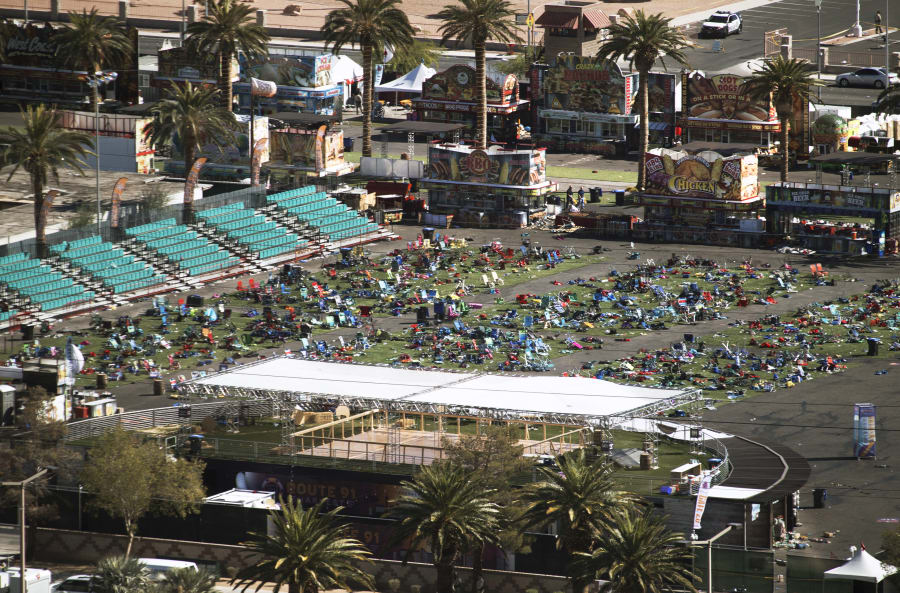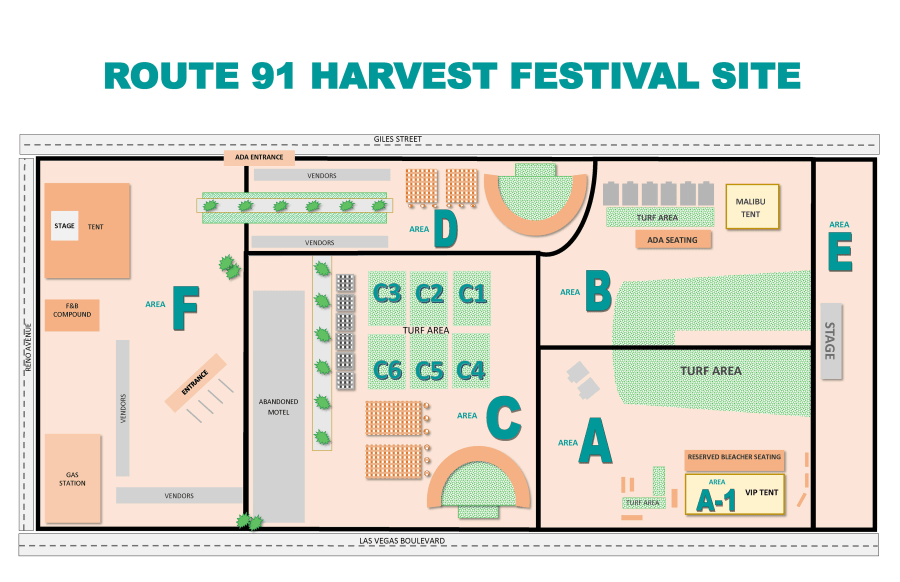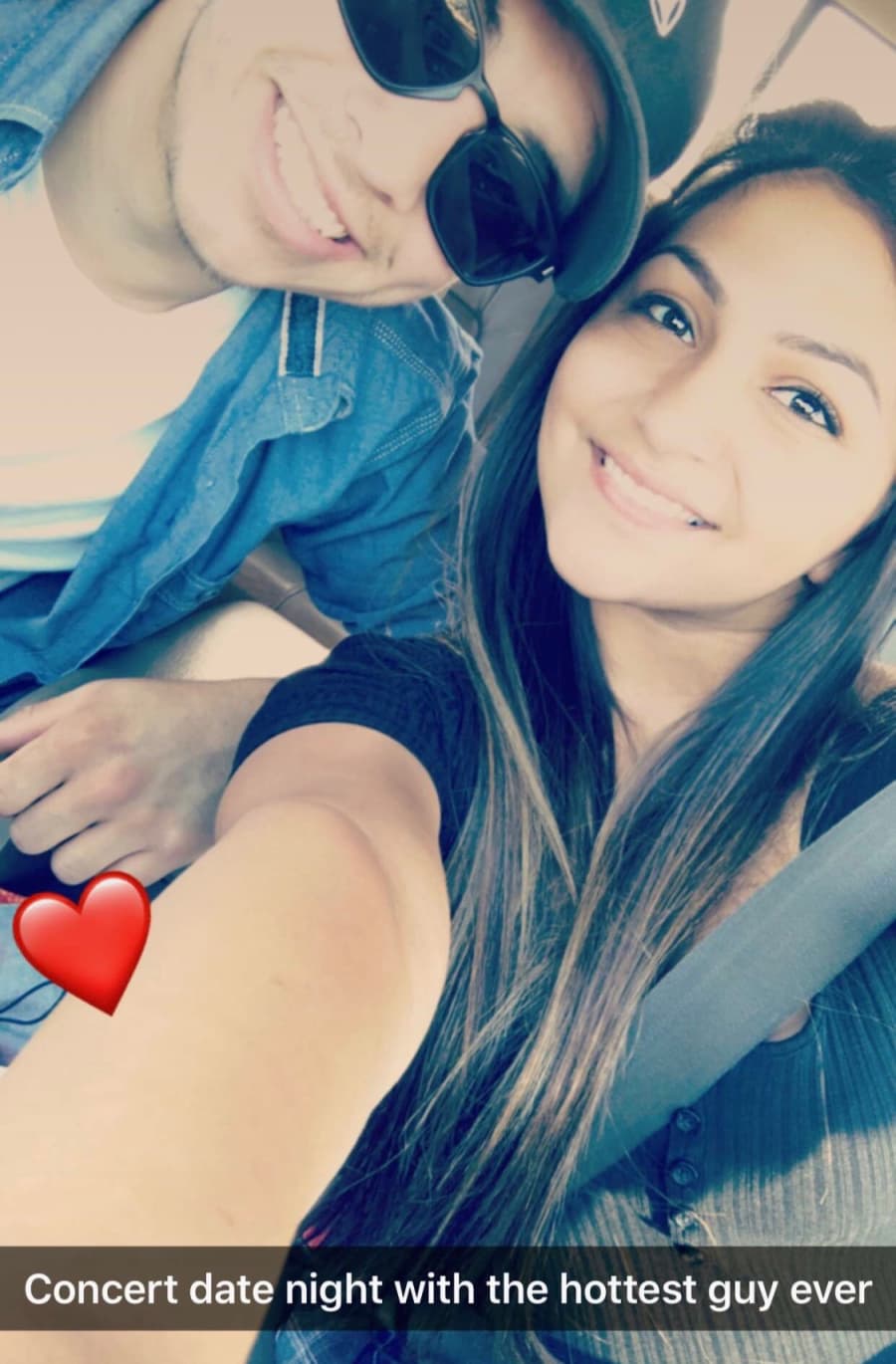Malinda Baldridge wore the sweater that night, tied around her waist. She brought it along in case she or her daughter got chilly at the Route 91 Harvest festival.
But after gunfire ripped through the air, she grabbed it to stop a stranger’s bleeding.
She pressed one end of the sweater to the woman’s neck, while her daughter, Breanna, then 16, held the other against her chest. The woman’s boyfriend was screaming for help.
When the shooting resumed, Malinda jumped on top of her daughter, both their hands still firm against the young woman’s wounds. Breanna heard her mother yell.
“Oh, my leg,” Malinda groaned.
Two bullets tore into her right thigh.
“Stay down, stay down,” her daughter shouted.
We have to run, Breanna told her mother.
Though she was reluctant to leave the injured woman’s side, Malinda knew she had to keep Breanna safe. She put her arm around her daughter’s shoulders, and they fled as fast as they could.
Behind them, the pretty, dark-haired woman lay in her boyfriend’s arms.
Hours later, the death toll had reached 58 plus the shooter, who had taken his own life. Hundreds more were wounded. The coroner had removed the bodies from the festival grounds, and the injured were taken to hospitals.
What remained on the 15-acre field were the remnants of panic.
People left behind cellphones. Hundreds abandoned purses, wallets and keys. They ran out of their shoes, racing to safety in bare feet. Someone left without an oxygen tank. Another left a motorized scooter.
Somewhere, amid the thousands of belongings, also lay Malinda’s dark gray sweater.


The morning light showed the full scale of the night’s chaos.
Aerial photographs taken by the FBI captured the enormity of the festival grounds, which stretched more than a quarter-mile along Las Vegas Boulevard. Pictures showed hundreds of red and blue lawn chairs strewn across the green artificial grass. There were heaps of beer bottles, food trays and other trash.
When Paul Flood walked onto the festival grounds, he felt overwhelmed by the sheer size of the scene. “How are we going to manage all this?” thought Flood, the unit chief of the FBI victim services division.
His group is charged with a little known task: reuniting victims with personal belongings lost at mass crime scenes.
The division also provides victims with help ranging from financial aid to counseling. Victim specialists “fill the void” in a criminal investigation, Flood said.
Since 2007, the FBI’s victim services response teams have deployed to about 21 mass events, including the Boston Marathon bombing and the Pulse nightclub shooting in Orlando, Florida. But the Las Vegas shooting marked the division’s biggest and most deadly scene to date.
In all, the FBI would collect more than 5,000 personal belongings from the festival grounds. The items filled the length of two football fields at the Las Vegas Convention Center.
The task might seem minor, given what law enforcement faces in the wake of a mass shooting. It cannot undo the suffering of victims. But offering them a choice to reclaim a lost wallet, a cellphone or some small part of the things they left behind can restore a sense of comfort or control.
“We recognize that a lot of stuff might have very little monetary value, but it can be of huge significance to a victim or family members of a victim,” Flood said.

At the request of the Metropolitan Police Department, FBI special agent Brian Fagan and the evidence response team he supervises helped coordinate an effort by agents from across the country to assist with evidence collection. His team took photos of the venue and mapped the area, dividing it into six quadrants, A through F. The map would make collecting evidence and personal belongings from the scene easier.
After bullets, shrapnel and any items struck by gunfire had been removed, victim specialists stepped in. They picked up clothing, boots, can koozies, cowboy hats, baseball caps, handbags and other items. They sorted out what could be traced back to an owner — a wallet with an ID, for instance — and what could not. Anything with hazardous fluid, like blood, was sent to be professionally cleaned.

They kept their focus for days as rotting meat from vendor stations, unemptied port-a-potties, stale beer and vomit swelled in the air, creating an almost unbearable stench. They stayed the course while cellphones rang incessantly, imagining that a victim’s loved one was on the other end of the call.
The items were taken to the Las Vegas Convention Center, provided by Clark County officials as the site for the division’s family assistance center. Victim specialists arranged items on folding tables in the center, dividing them by quadrant, then by item type. They also catalogued the objects into a database.
“So if you tell me you have a purple backpack, I can go in, search my system and see that I’ve got a purple backpack in quadrant A and quadrant B,” Flood said.
Privacy rooms were set up at the center where specialists could meet concertgoers, listen to their stories and help them track down their belongings. Each room had tables, chairs, a box of tissues and a map, a crucial tool in determining where an item had been lost, Flood said.
For those who lost items and could not come to the family assistance center, the agency posted the map online along with a detailed questionnaire. All victims were carefully vetted to ensure the items they were seeking belonged to them.
It took more than two weeks and more than 200 FBI and other law enforcement officials from across the country to gather and sort through all the items.
In the next four months, Flood’s team would receive new assignments — a terrorist attack in New York, a mass shooting at a church in Sutherland Springs, Texas, and one at a high school in Parkland, Fla.

Malinda Baldridge was at work when she got an email April 9 from the FBI.
The personal belongings in FBI custody had been sent to an out-of-state warehouse overseen by a private company. That company had listed the items in an online catalog, now available for viewing on a password-protected site, the email explained.
It was not the only reminder of the shooting.
The 44-year-old had returned to her home in Reno with one clean gunshot wound through her right leg. The second bullet had shattered when it hit, leaving countless fragments in her upper right thigh. For months, she received wound care from a local hospital every Monday, Wednesday and Friday. She still went to physical therapy on Tuesdays and Thursdays.
She and her daughter also attended counseling once a week. Breanna, the youngest of three children, had coped with the shooting differently from her mother. Reluctant to talk about the shooting, she internalized more of her feelings. At times, it had been hard for Malinda to tell how Breanna was really doing.
Hours after the FBI email arrived, at around 10 p.m., the Baldridge home was quiet. Malinda’s husband, Dan, who worked state security at the Air National Guard base, left for his graveyard shift. Breanna was in bed. Her oldest brother, Austin, 22, lived with his girlfriend, and Justin, 19, had gone out.
Malinda sat down at the desk in her bedroom and opened her laptop. She clicked on the link in the FBI’s email.
Maybe, just maybe, she thought, her sweater would be there. Dan had given it to her a few years ago for Christmas, and it had quickly become one of her favorites. She’d pointed it out to Dan before he gave it to her and was tickled he remembered she had been eyeing it. It was cozy and went well with most outfits.
She clicked through page after page. There were cowboy hats, shoes and a hodgepodge of other items. She saw at least four Captain America T-shirts. At times, it almost felt like she was looking through a retail catalog.
Then she saw the sweater. It looked brand new. She stared at the photo to make sure it was hers. One of the tags, a tiny black one at the top, was torn. It had been like that for years.
The memories started rushing back. Malinda remembered staying at Mandalay Bay for what began as a girls’ weekend with her daughter. She recalled going to the hotel pool. She thought back to her daughter pleading with her to wear a cute dress instead of jeans for when Jason Aldean — Breanna’s favorite country musician — played that night.
She peered closer at the photograph and saw a couple spots on the sweater that seemed discolored, perhaps bleached, as if the stains had been stubborn.
The young woman’s blood, Malinda thought.
She recalled hearing the gunfire above her that night. The woman falling to the ground and seeing the woman’s boyfriend later at the same hospital. She could still picture him walking down the hallway, his face blank.
Malinda remembered watching the news two days later and learning the woman’s name and fate.
Angela Gomez was only 20. Her photo was in a gallery of those who had died.

Since the shooting, roughly half of the personal effects collected at the scene have been returned to their owners, Flood said. Usually, people come looking for belongings they feel are vital, like cellphones or wallets, he said.
Ordinary items sometimes become significant, as representations of hope or just symbols of survival.
Anything connected to a person’s senses, including objects, is likely to serve as a trigger that can cause an emotional response or memory, said Dr. Mary Lamia, a clinical psychologist who has written articles on the subject. Objects are simply objects until human beings assign them meaning, she said.
“That’s where cognition, our thoughts, interface with emotion,” she said. “Emotion is just there, and it makes us feel something. Our thoughts then add in a story that directs it in some way.”
People came back for leather, hand-stitched can koozies from the festival. A group of college students came to the center for assistance. One of them was looking for a pair of white Birkenstocks. Victim specialists were only able to find one sandal. Still, the entire group was overjoyed. Getting back the one shoe represented their survival as a group, Flood recalled.
One item recovered from the festival grounds was a silver necklace with a thumbprint pendant. It had fallen off a woman as she ran for her life. The thumbprint belonged to a boyfriend who had died years ago.
“She thought she would never see it again,” Flood said. “Getting that back to her was a real morale boost for us too.”
If people claim items from the website, the FBI is notified. Based on the owner’s preference, the agency either ships the object back or has it personally delivered by a victim specialist in one of its 56 field offices.
Flood estimated that roughly 15 to 20 percent chose not to retrieve their personal effects, though the FBI holds on to the items for years, just in case.
“Sometimes people want to forget, and sometimes people want to remember,” he said. “But being able to give them that opportunity by having the personal effect is a valuable thing.”
When Malinda Baldridge finally checked the time that April night, it was 2 a.m. She’d been staring at the computer screen for four hours.
Looking at the picture of the sweater, her heart broke again for Gomez, her boyfriend and her family. She had not reached out to them, instead giving them their privacy. As a mother, Malinda felt it was the same courtesy she would have wanted.
The sweater had never held much sentimental value for her. Now, though, she thought, it was no longer ordinary.
Malinda and Breanna had witnessed the worst of humanity that night. They’d also seen strangers helping one another, using their bodies as shields or carrying people off the grounds. They now see the world as a bit more unpredictable.
Since the shooting, Malinda looks in all directions whenever she leaves the house, as if she’s waiting for something bad to happen. She found herself stressed out by small tasks that would not have bothered her before, like waiting in line at the grocery store.
There were also physical reminders. Malinda has what she calls “bad leg days,” when she feels more pain from the bullet fragments in her thigh. She recalled a plastic drawstring bag that had been sitting in her garage for months. Inside were the other bloodied clothes she had on the night she was shot. Afraid to look inside, she has not opened it yet.
Sitting in front of the computer, she felt uncomfortable looking at her lost sweater. She didn’t want Breanna to see it. Her daughter was still struggling too.
Now 17, Breanna sometimes feels disconnected from her friends. Although she has always had a serious demeanor, she doesn’t find the same jokes as funny as her friends anymore. She cries easily and inexplicably. It hurts her to watch her mother’s pain. It reminds her of the shooting.
Breanna and Malinda still go to concerts together. But they no longer stay for the entire show. To avoid getting caught in the crowd, they leave by the second to last song, maybe the third.
Malinda knew she’d been lucky. She had left the festival grounds that Oct. 1 night with what was most precious to her.
She took a last look at the computer screen and closed the laptop. Malinda decided she did not want the sweater.
It would only bring memories she didn’t want and a reminder of something she couldn’t get back.
Watch Malinda's story here
Contact Anita Hassan at ahassan@reviewjournal.com or 702-383-4643. Follow @anitasnews on Twitter.



